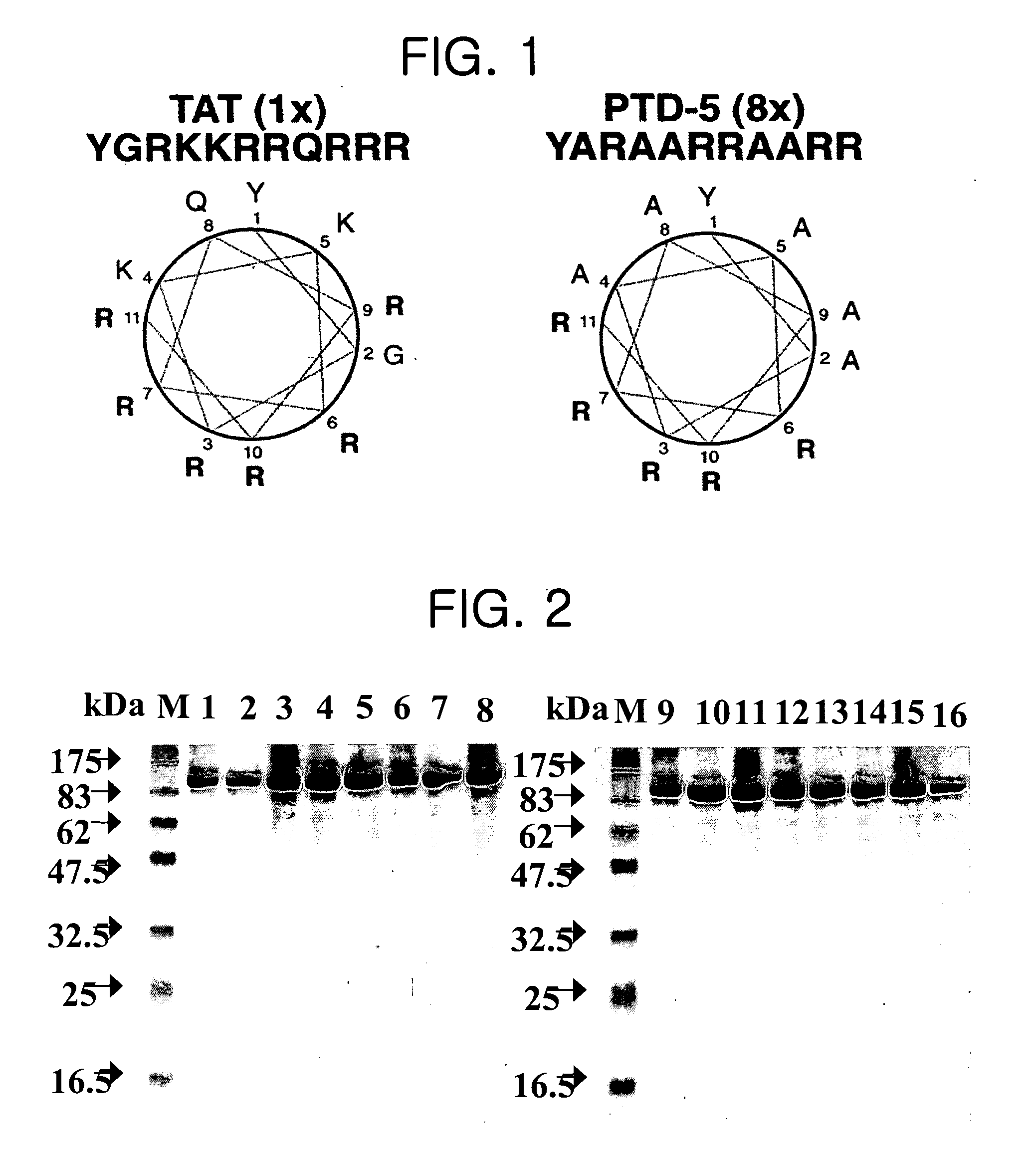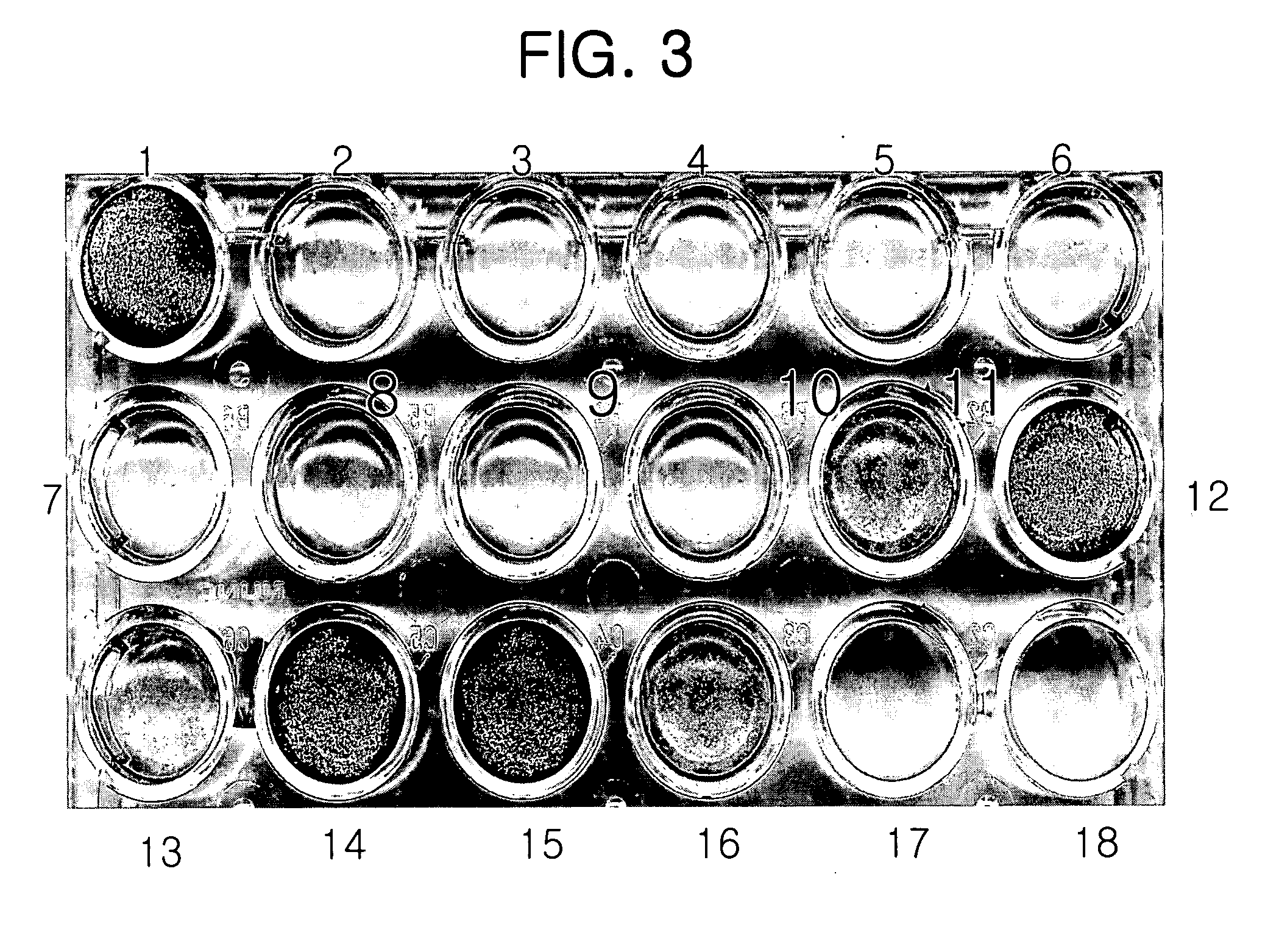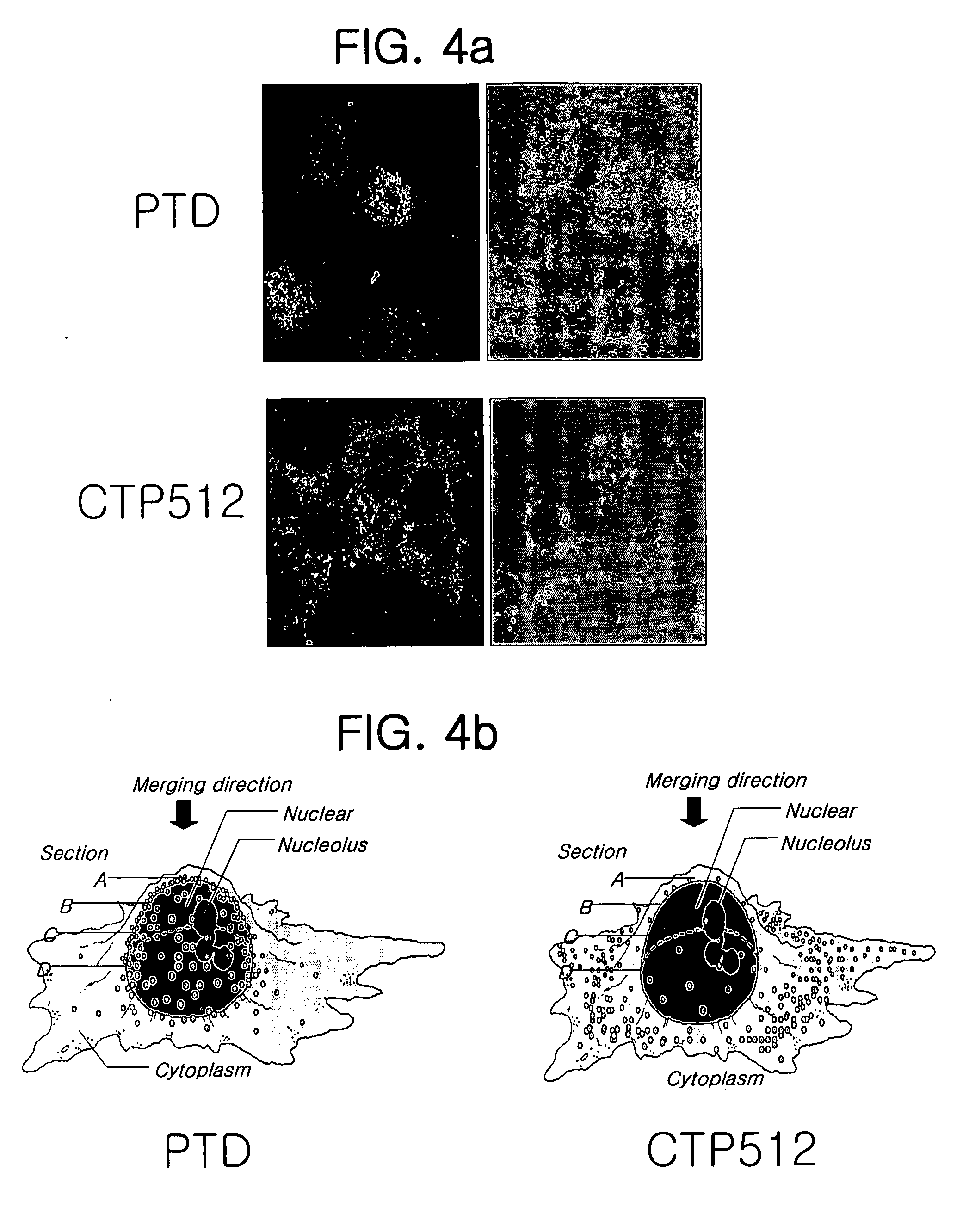Cytoplasmic tranduction peptides and uses thereof
- Summary
- Abstract
- Description
- Claims
- Application Information
AI Technical Summary
Benefits of technology
Problems solved by technology
Method used
Image
Examples
example 1
The Process for Designing CTP
[0069] To construct the CTP of this invention, it was necessary that a membrane transduction peptide be deprived of its NLS function; therefore the present inventors researched the functional requirements of NLS. To understand the structural characteristics of NLS, the inventors studied the structure of mouse importin-α protein bound to the NLS region of the nuclear protein nucleoplasmin (Fontes et al., 2000). Lys residues of NLS are bound to the binding cleft of importin-α with highly distributed negative charges in extended and twisted conformations. The NLS of nucleoplasmin has 4 consecutive Lys residues in the region of the C-terminal, which show an extended conformation in the binding cleft of importin-α and form as many salt bridges as possible to the negative-charged binding cleft.
[0070] Therefore, although the binding structure between the importin-α protein and the Tat PTD has not yet been elucidated, it could be understood that the rigidity o...
example 2-1
Primer list for CTP Candidates
[0085] The pTAT-HA LacZ vector used in this example was kindly provided by Dr. Dowdey at Washington University School of Medicine, in which the LacZ protein is cloned at the XhoI site. The PTAT-HA vector carries a T7 promoter 6× His-tag and Tat domain for the expression and purification of the desired protein, and a multiple cloning site for cloning. For cloning CTP candidates of this invention, pTAT-HA LacZ was digested with BamHI and NcoI to remove the Tat domain and HA-tag region, and then the oligonucleotides encoding CTP candidates of this invention were cloned in pTAT-HA LacZ. The LacZ coding for β-galactosidase protein was cloned at the XhoI region of the pTAT-HA vector.
[0086] The amino acid sequences of the CTP candidates are indicated in Table 1. The PTD and CTP candidates consist of 11 amino acids other than MTS (12 amino acids), and the amino acids substituted are indicated in bold letters. The primers for CTP development were purchased fro...
PUM
 Login to View More
Login to View More Abstract
Description
Claims
Application Information
 Login to View More
Login to View More - R&D
- Intellectual Property
- Life Sciences
- Materials
- Tech Scout
- Unparalleled Data Quality
- Higher Quality Content
- 60% Fewer Hallucinations
Browse by: Latest US Patents, China's latest patents, Technical Efficacy Thesaurus, Application Domain, Technology Topic, Popular Technical Reports.
© 2025 PatSnap. All rights reserved.Legal|Privacy policy|Modern Slavery Act Transparency Statement|Sitemap|About US| Contact US: help@patsnap.com



